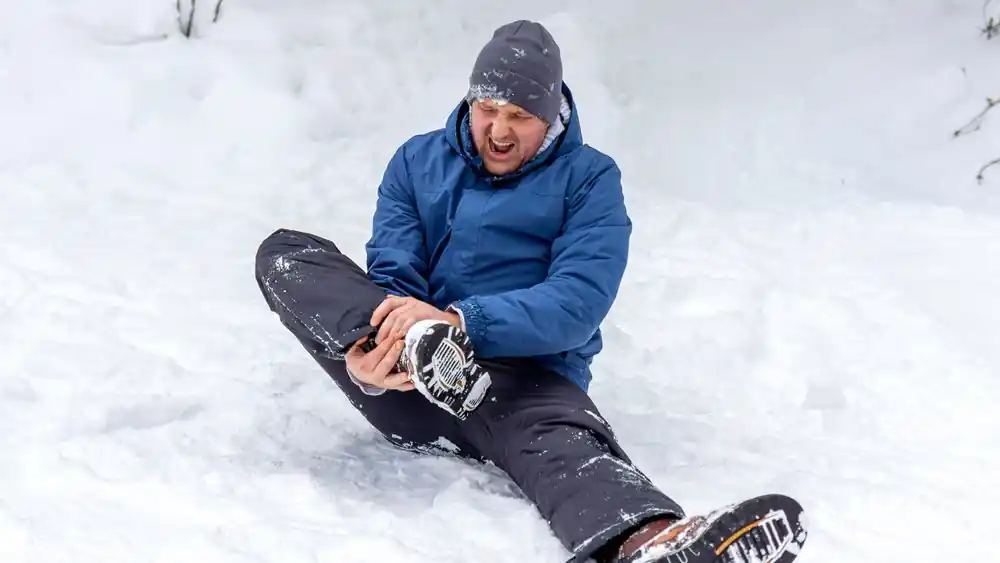
As temperatures drop and winter approaches, the risk of injury often increases. Snow and ice create slippery surfaces, cold weather stiffens muscles, and winter sports introduce new challenges. At Springfield PT Wellness, we believe that everyone can enjoy winter activities safely with the right precautions. By focusing on injury prevention and strengthening key areas of the body, physical therapy can keep you active and injury-free all season.
Common Winter-Related Injuries and Why They Happen
Winter brings unique risks for injuries due to factors such as cold temperatures and slippery surfaces. Common winter injuries include:
- Slips and Falls: Icy and uneven surfaces increase the likelihood of falls, often leading to fractures or sprains.
- Lower Back Strain: Cold muscles are more prone to strain, especially with movements like shoveling snow.
- Wrist and Shoulder Injuries: These areas are commonly affected by falls, often due to attempts to catch oneself.
- Knee and Ankle Twists: Uneven or icy ground can easily lead to twists and sprains in these joints.
With preparation and preventive exercises, many of these injuries can be avoided.
Tips to Improve Balance and Stability
Improving your balance is essential for navigating icy and snowy surfaces safely. At Springfield PT Wellness, we work with clients on exercises designed to enhance balance and coordination. Here are some simple but effective exercises you can do at home:
- Single-Leg Stand: Stand on one leg for 10-20 seconds, then switch. This strengthens stabilizing muscles in your hips, knees, and ankles.
- Heel-to-Toe Walk: Walk in a straight line, placing your heel directly in front of your toes with each step, to improve balance and core engagement.
- Side Leg Raises: Standing next to a wall or sturdy surface, lift one leg to the side and hold. This helps strengthen the hip muscles, which are vital for stability on uneven ground.
Practicing these exercises a few times a week can greatly improve your balance and lower your risk of falls.
Importance of Core Strength for Winter Activities
A strong core provides stability and support for your entire body, which is especially important when navigating slippery surfaces. Here are some core-strengthening exercises we recommend:
- Plank: Hold a plank position for 20-30 seconds, gradually increasing over time. Planks engage the core, back, and shoulder muscles, which support balance.
- Bird Dog: On all fours, extend one arm and the opposite leg, holding for a few seconds. Switch sides and repeat. This exercise strengthens the core while enhancing balance.
- Russian Twists: Sit on the floor with knees bent, lean back slightly, and twist from side to side. This strengthens the obliques, which are essential for balance.
By incorporating core exercises into your weekly routine, you’ll be better equipped to stay upright and stable on slick surfaces.
How Physical Therapy Prepares Your Body for Icy Conditions
At Springfield PT Wellness, we focus on injury prevention for clients year-round, but winter brings unique challenges that benefit from a physical therapist’s guidance. Physical therapy can help you:
- Strengthen Muscles Around Vulnerable Joints: Strengthening muscles around joints like the ankles and knees helps protect against sudden slips or twists.
- Improve Flexibility: Flexibility exercises reduce stiffness and increase range of motion, making movements smoother and less injury-prone.
- Increase Proprioception: Proprioception, or body awareness, improves coordination and makes it easier to catch yourself if you slip.
If you’re concerned about winter injuries, a personalized session with a physical therapist can target your specific needs and help prevent common issues.
Exercises You Can Do at Home to Prevent Winter Slips and Falls
Here are some quick exercises you can incorporate into your daily routine to stay stable and strong through winter:
- Wall Sits: Lean against a wall, slide down to a seated position, and hold. Wall sits strengthen the legs, which are key for stability.
- Toe Raises: Stand with your feet hip-width apart and rise onto your toes. This helps strengthen the calves and ankles.
- Chair Squats: Sit down and stand up from a chair without using your hands. This strengthens the legs and core, which are crucial for balance.
Choosing the Right Footwear and Gear for Winter Safety
Wearing proper footwear is essential for preventing slips and falls. We recommend:
- Anti-Slip Soles: Choose shoes or boots with good traction to reduce the risk of slipping.
- Use of Walking Aids: If you need additional stability, consider using walking poles or other aids.
- Appropriate Clothing: Staying warm with flexible, layered clothing allows your muscles to stay warm and reduces stiffness.
FAQs on Winter Injury Prevention and Recovery
- How often should I perform balance exercises?
- Aim for 3-4 times a week, with each session lasting around 10-15 minutes.
- Are balance exercises safe for older adults?
- Yes! Balance exercises are highly beneficial and can be easily modified to suit all ages and fitness levels.
- What should I do if I slip and fall?
- If you experience a fall, assess for injuries. If you feel pain or suspect a sprain, contact a healthcare provider or physical therapist.
- How can physical therapy help if I’ve already injured myself this winter?
- Physical therapy is effective for recovery from winter-related injuries by addressing pain, improving mobility, and strengthening surrounding muscles.
Conclusion: Stay Safe and Active This Winter with Physical Therapy
Winter activities don’t have to mean more injury risks. At Springfield PT Wellness, we help our clients develop strength, balance, and flexibility, preparing them for safe and enjoyable winter months. If you’d like to learn more about injury prevention or receive a personalized winter exercise plan, reach out to us. Our goal is to help you move confidently and safely, regardless of the weather.




